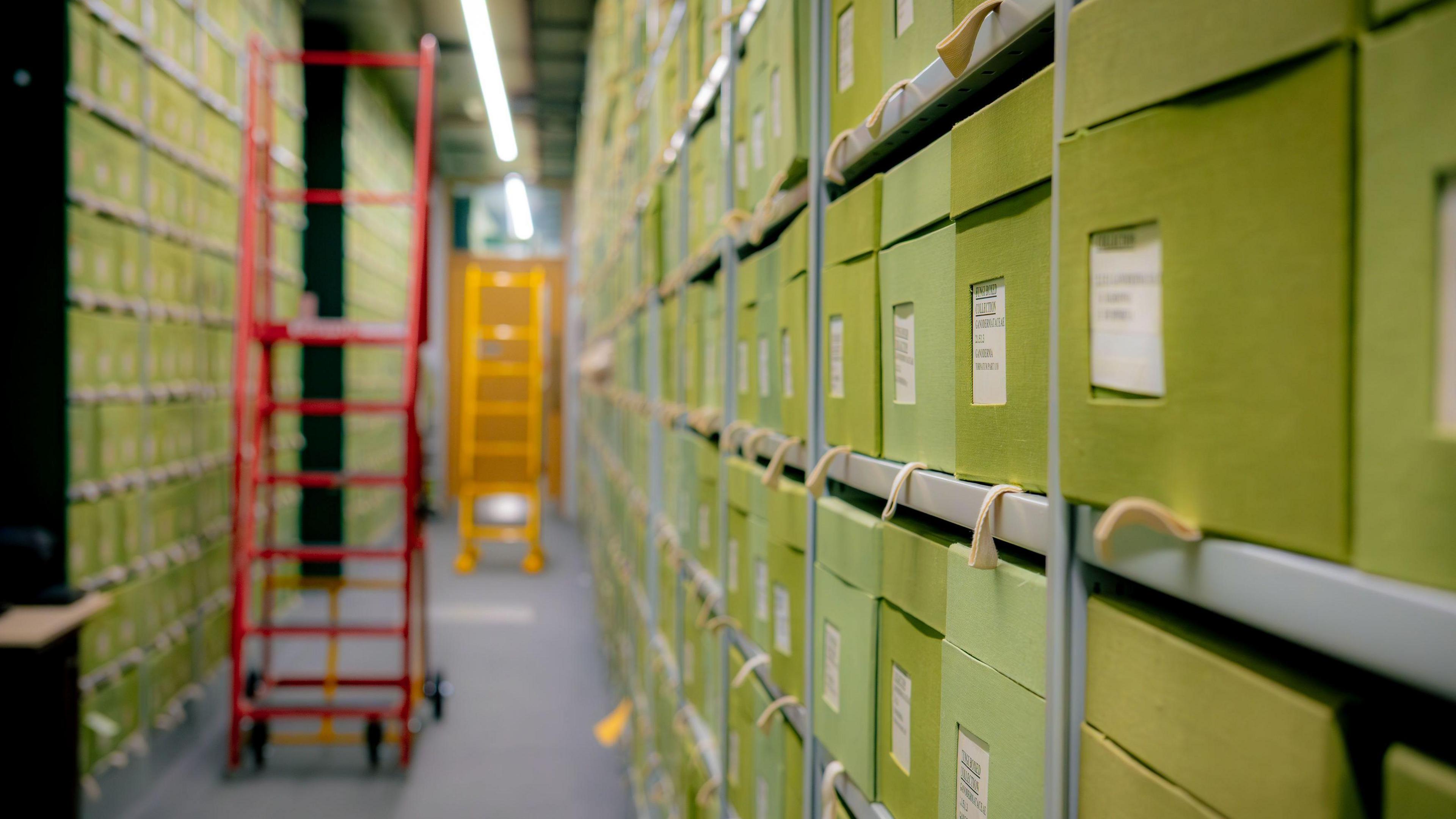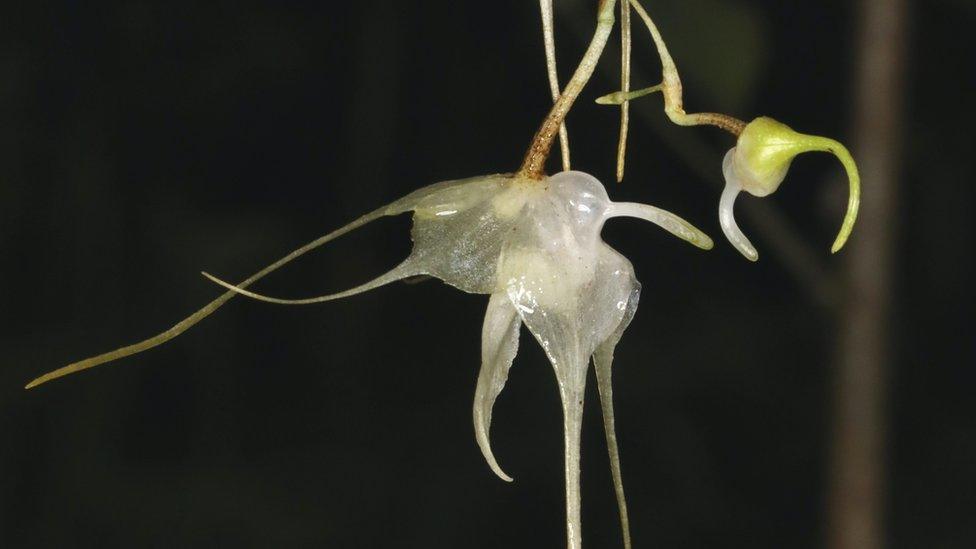'Zombie spider' fungi among Kew archive specimens

Gibellula attenboroughii - or David Attenborough's "zombie fungus" - on a spider
- Published
"Zombie spiders" and Darwin's HMS Beagle collection are among the fungi being digitally archived by scientists at the Royal Botanic Gardens, Kew.
Kew's Fungarium, an archive beneath the west London garden, is one of the world's biggest and most important collections of fungal diversity.
It contains more than a million specimens collected over the past 175 years.
Teams have been creating high resolution images, transcribing the data and uploading it onto Kew's portal, which grants researchers worldwide remote access to the collection.

Stereum hirsutum, a fungus collected at around 15,000 ft during an Everest expedition in 1953
Operations manager of the Fungarium digitisation, Shaheenara Chowdhury, said fungi "have been overlooked by the scientific community for so long, and yet they are amongst the most wonderful and mysterious organisms on the planet".
The specimens are georeferenced and span decades, meaning experts can observe how a species' range has changed over time, helping to inform conservation plans.
Kew scientists have also been tapping into the genetic information stored in the Fungarium's 50,000 type specimens.
The project, which is a partnership with the Natural History Museum and is backed by government funding, aims to sequence about 7,000 of these fungi, making the data publicly available online in the coming years.
The hope is that this will accelerate the discovery of new chemicals and medicines.
Scientists estimate there are 2.5 million fungal species in the world but only 166,000 have been described.

Kew's Fungarium containins more than 1.1m specimens
Among the species digitised by the Kew team is Gibellula attenboroughii - or David Attenborough's "zombie fungus" - named after first being spotted on an episode of BBC's Winterwatch in 2021, having infected an orb-weaving cave spider.
The parasitic fungus species belongs to a group that infects their invertebrate hosts and takes control before killing them as part of their spore-spreading mechanisms.
Another was Cyttaria dawinii, a small globular parasitic fungus collected by Charles Darwin in the Tierra del Fuego archipelago in South America during the HMS Beagle voyage between 1831 and 1836.
Listen to the best of BBC Radio London on Sounds and follow BBC London on Facebook, external, X, external and Instagram, external. Send your story ideas to hello.bbclondon@bbc.co.uk, external
Related topics
- Published11 January 2024
